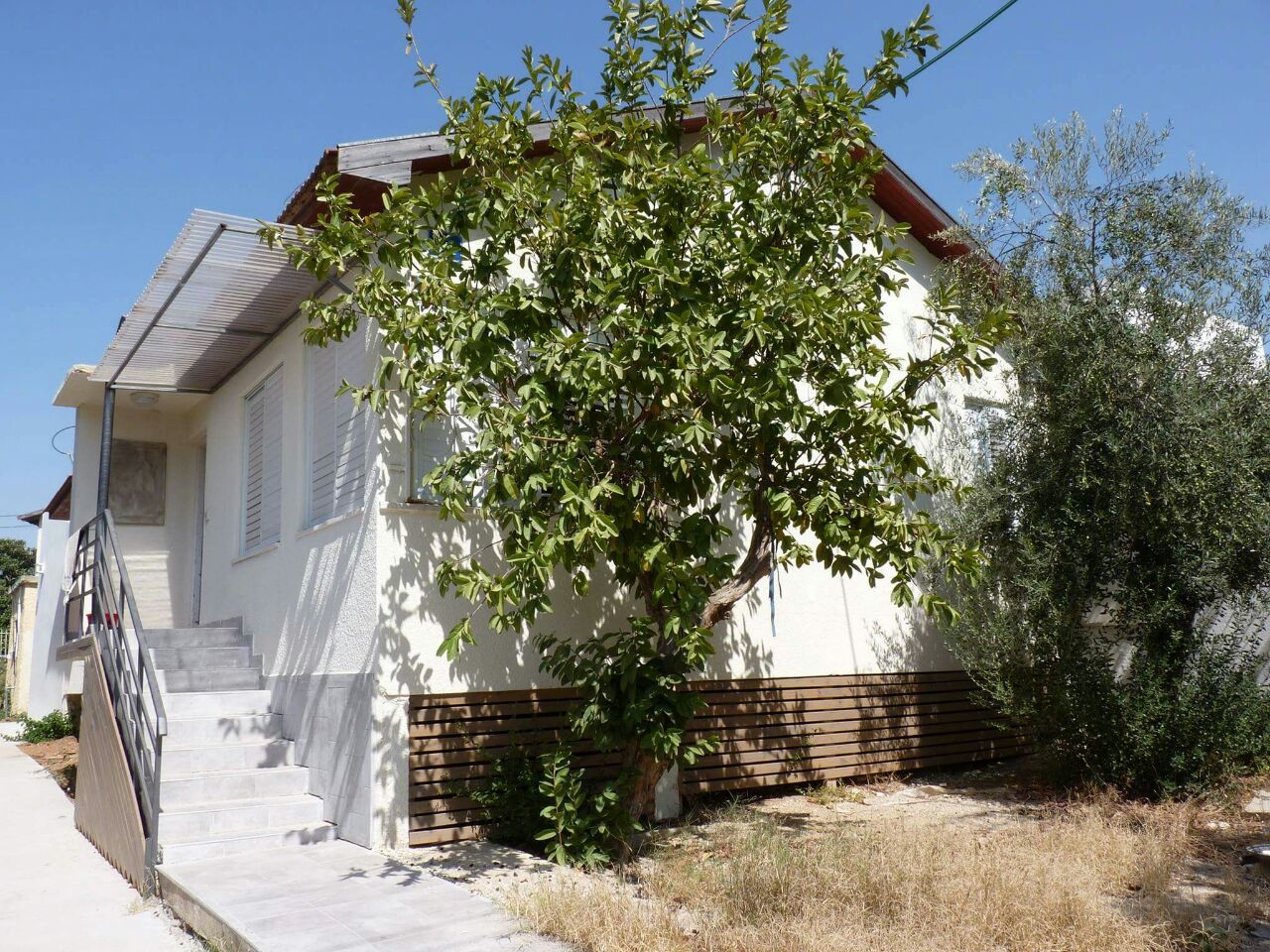Tuesday 23/08/16 afternoon in Sderot. My colleague and I wanted to explore how civilians were managing following Sunday’s rocket attack. There has been some media coverage of the attack – but focus has been on the destruction caused in Gaza by the Israeli response in Gaza – even if the journalist or editor had to find a picture of destruction from earlier years and pass it off as new.
In Photo- The family home that was hit, luckily the rocket didn’t explode, credit: Damon Rosen
We met near the town’s bazaar. The street was empty except for a few cars passing. Late August heat? Or perhaps fear of retaliation against IDF’s response? So we decided to go to the street that took the hit directly.
On arriving we saw two elderly men sitting on the front porch of a nearby house. We introduced ourselves and asked for their help. They pointed us to the property struck by the rocket and talked with us a bit. But they didn’t want to do an actual interview – as one of them said, “I’m just tired of journalists”. Yes, residents are tired of being pawns for promoting a journalist or his editor’s agenda, especially given how much the conflict is misrepresented, and how little concern there seems to be about the people living under fire year after year. We thanked them for their time and continued on our way.
As we approached the property we met Chaim, a 72 year-old resident. He has lived in Sderot for over 30 years. His grandchildren are growing up under constant threat of rocket fire. Again and again they have had to run for shelter with just 15 seconds or less to reach a safe space. We asked him to join us at the house and tell us about it. The residents of the house, he told us, are a young couple. Luckily they were away on Sunday. It’s the second time this particular house has been struck by a rocket in the past five years – the first time caused so much damage that the house needed reconstruction. The street has been hit countless times during the past 15 years resulting in destruction of many homes – close to the city’s public swimming pool and a music school for children and teens.
Then we decided to visit the kindergarten that had been destroyed on 1 July. On the way the streets were almost empty. We noticed that there was a stretch of about a mile with no bomb shelters – here, in the “bomb-shelter capital of the world”. This was alarming. Remember, when a siren goes off, there are maximum 15 seconds to get to safety. We had just passed a memorial for someone who was killed there by a rocket – unlucky soul. Suddenly we spotted a bus-stop shelter, and I challenged my colleague to run to it. He is healthy and young, and by running as fast as he could, he made it in just under 15 seconds. Many residents risk death on that street. Some, typically those disabled or aged or carrying heavy things, can’t run fast enough. Others may not see the shelter quickly enough – typically children playing or friends and families talking together.
We reached the kindergarten – closed and empty. It’s near an apartment building and a day care center for the elderly – and not far away there are more kindergartens and an elementary school. Luckily it was this kindergarten that was hit – it was lucky because it happened when the children and staff were not there.
The street was completely empty – not even any cars driving through. Finally we found a few passersby, but no-one was willing to talk with journalists. No trust? Just tired of the whole thing? Sderot 2016 – town under fire, town of survivors, town with a story increasingly untold.










